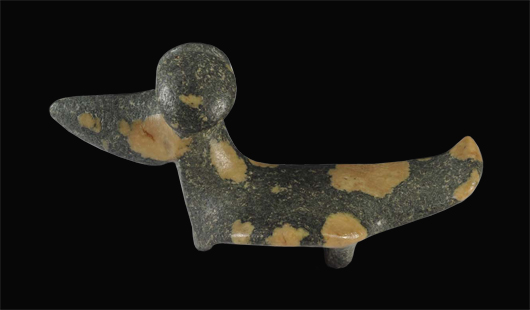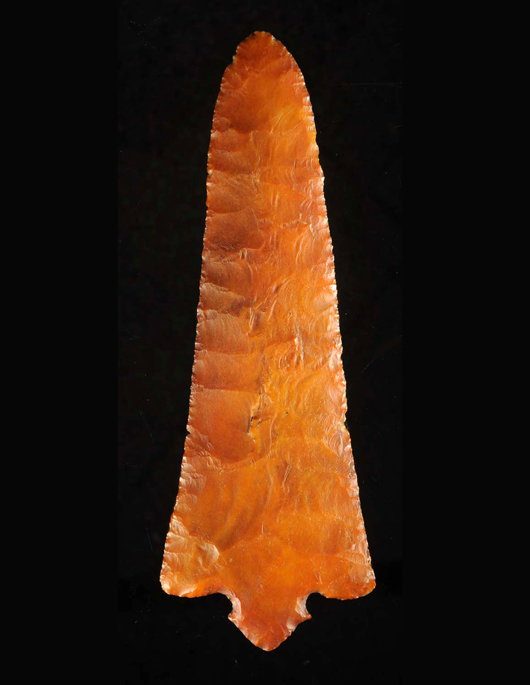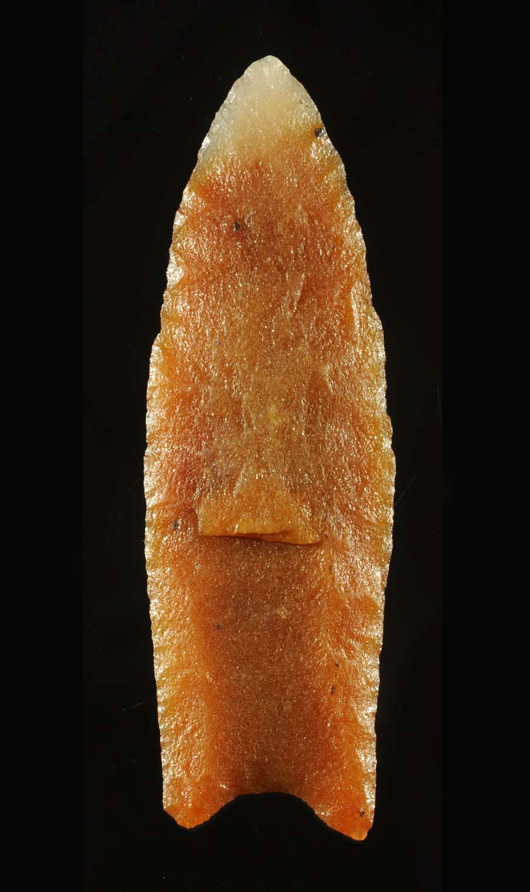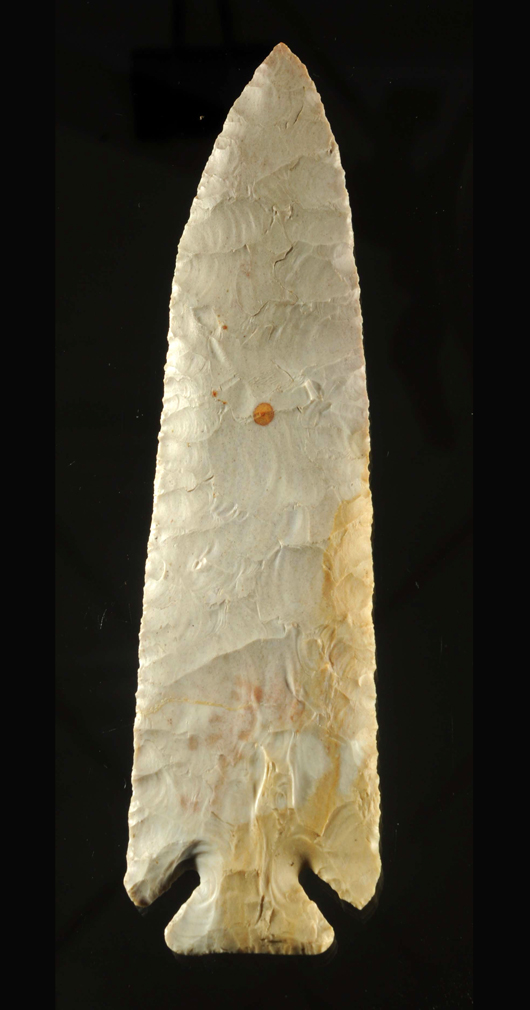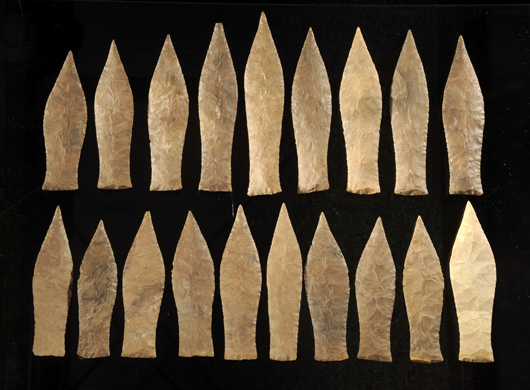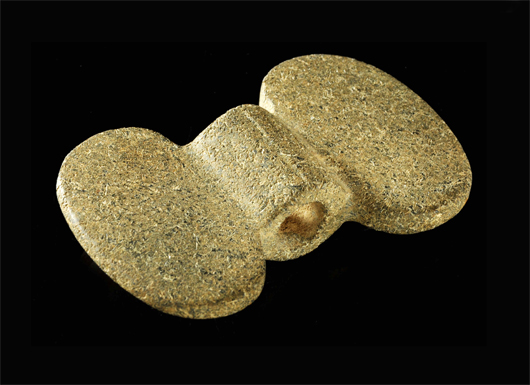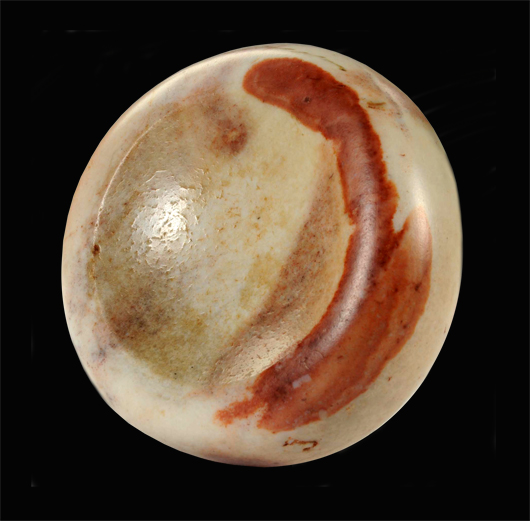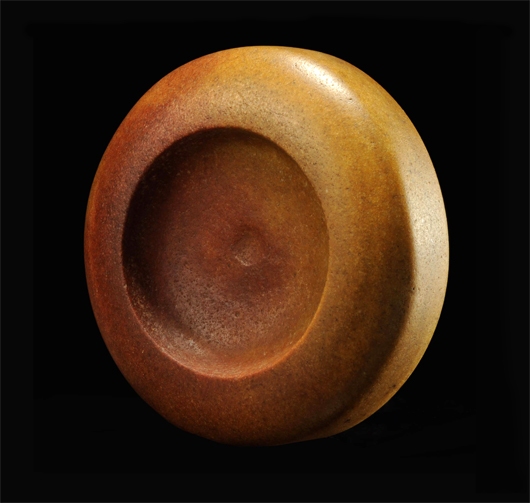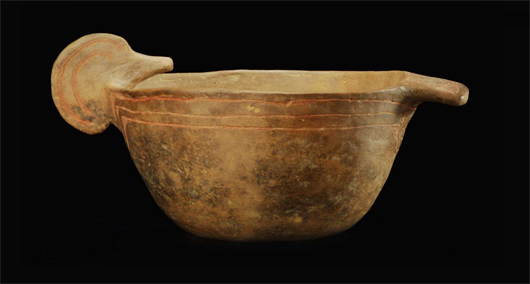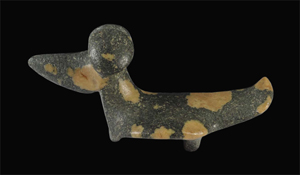
The celebrated Parks Birdstone, featured in Cameron Parks’ 1959 book ‘Birdstones of the North American Indian,’ found on a farm in DeKalb County, Indiana, in October 1950. Never before offered for public sale. Est. $500,000-$750,000. Morphy Auctions image
DENVER, Pa. – One of the world’s five finest prehistoric birdstones occupies the top roost in Morphy’s May 17 auction of superior-quality, vetted and fully warranted prehistoric American artifacts. LiveAuctioneers will provide the Internet live bidding for the sale.
Known as the Parks Birdstone, the celebrated artifact estimated to be around 2,500 years old has remained in the same family since 1951, when it was discovered in a plowed field in DeKalb County, Indiana. It ended up in the collection of renowned collector Cameron Parks, hence the name “Parks Birdstone.”
“Top birdstones have sold privately for $800,000 to $900,000. Because of its mystical and unique blue halo, the Parks Birdstone should set a world record price on May 17th – not only for a birdstone, but also for any North American prehistoric art object,” said John Mark Clark, the department head and specialist who is supervising the auction.
Another premier entry is an 8-inch-long translucent orange kaolin flint Ross blade from the Hopewell culture that flourished along rivers in the northeastern and Midwestern United States from 200 BC to 500 AD. An exalted ceremonial piece, the blade is described by Clark as “exotic ceremonial regalia so rare it would have been reserved for only the most elite. Now, many centuries later, it is still a prize suitable for only the most select, high-end collection.” The Ross blade is expected to make in excess of $200,000.
Trophy game stones or, “discoidals,” are well represented in the auction. An exquisite, double-cupped example displays impeccable balance and form, while other highly desirable discoidals include one of red and white “flint” with highly polished cups, three exquisite Jersey Bluff-style quartz discs and several of Cahokia style.
What is considered to be the finest cache of Dover flint Copena points yet discovered will add excitement to the auction, along with Earl Townshend’s monumental 7-inch Corner Notch Blade. An incredible translucent “white-tipped” sugar-quartz Clovis point is also included in the sale, along with a tremendous Agate Basin spear and coveted projectile points from all cultural time periods.
Prehistoric Caddo and Mississippian-Era pottery will be available, including a solid, unrestored Caddo effigy duck bowl and several pottery bottles and bowls engraved with rare Caddo motifs. A huge human “rattle-head” Mississippian bowl (restored) with a fantastic hairstyle will also be auctioned.
A fine selection of bannerstones includes a ferruginous-quartz hourglass, a speckled-granite rectangular barrel, and a saddleback-style banner of colorful speckle-chunk granite. Perhaps the rarest of the group is an exquisitely made wiry-granite butterfly banner with an engraved barrel, one of only two known.
Another auction highlight is a pair of museum-grade Southern “Dallas” culture limestone ear spools. The prehistoric wearable artworks retain remnants of their original copper-foil covering.
In addition to the satisfaction prehistoric artifact collectors derive from owning remarkable pieces of history such as those to be sold on May 17th, Clark says many in the hobby regard the objects as solid investments.
“From a worldwide perspective, current prices in the North American marketplace are a fraction of what is being paid for comparable examples throughout the rest of the world,” Clark said. “In part, this is attributable to the fact that often such artifacts are not backed by any sort of warranty. Some of the pieces in our upcoming sale have been tucked away quietly in family collections for more than 60 years, and this will be the first time they have ever been offered publicly. But on top of that, Morphy’s stands behind the authenticity of every artifact they sell. This makes a tremendous difference to collectors. They want that comfort factor in place when they bid.”
Morphy’s Saturday, May 17 Prehistoric American Artifacts Auction will begin at 9 a.m. Eastern Time. For additional information on any item in the sale, call 717-335-3435 or email serena@morphyauctions.com.
View the fully illustrated catalog and sign up to bid absentee or live via the Internet at www.LiveAuctioneers.com.
# # #
ADDITIONAL LOTS OF NOTE
The celebrated Parks Birdstone, featured in Cameron Parks’ 1959 book ‘Birdstones of the North American Indian,’ found on a farm in DeKalb County, Indiana, in October 1950. Never before offered for public sale. Est. $500,000-$750,000. Morphy Auctions image Ross blade, Woodland period, Hopewell phase, 8 1/8 inches long. Est. $200,000-$300,000. Morphy Auctions image Translucent sugar quartz Clovis point, early Paleolithic, Fulton County, Illinois. Est. $45,000-$60,000. Morphy Auctions image Earl Townsend’s monumental 7in Corner Notch Blade, Archaic, 7500-4000 B.P., Missouri origin. Est. $40,000-$60,000. Morphy Auctions image Copena Cache, Woodland period, 3000-1300 B.P., Decatur County, Tennessee. Est. $60,000-$80,000. Morphy Auctions image Butterfly bannerstone, Archaic Period, 6000-4000 B.P., Montgomery County, Tennessee. One of only two known butterly bannerstones made of wiry granite. Est. $25,000-$35,000. Morphy Auctions image Flint discoidal, Mississippian period, 1000-5000 B.P., Dickson County Tennessee. Est. $20,000-$30,000. Morphy Auctions image Grayware headpot, Late Mississippian, 600 B.P., Golden Lake Site, Mississippi County, Arkansas. Est. $60,000-$80,000. Morphy Auctions image Double-cupped discoidal, Mississippian period, 1100-600 B.P., Hamilton County (Chattanooga), Tennessee. Est. $30,000-$40,000. Morphy Auctions image Caddo pottery effigy bowl in shape of duck, 800-600 B.P. Est. $2,500-$4,500. Morphy Auctions image